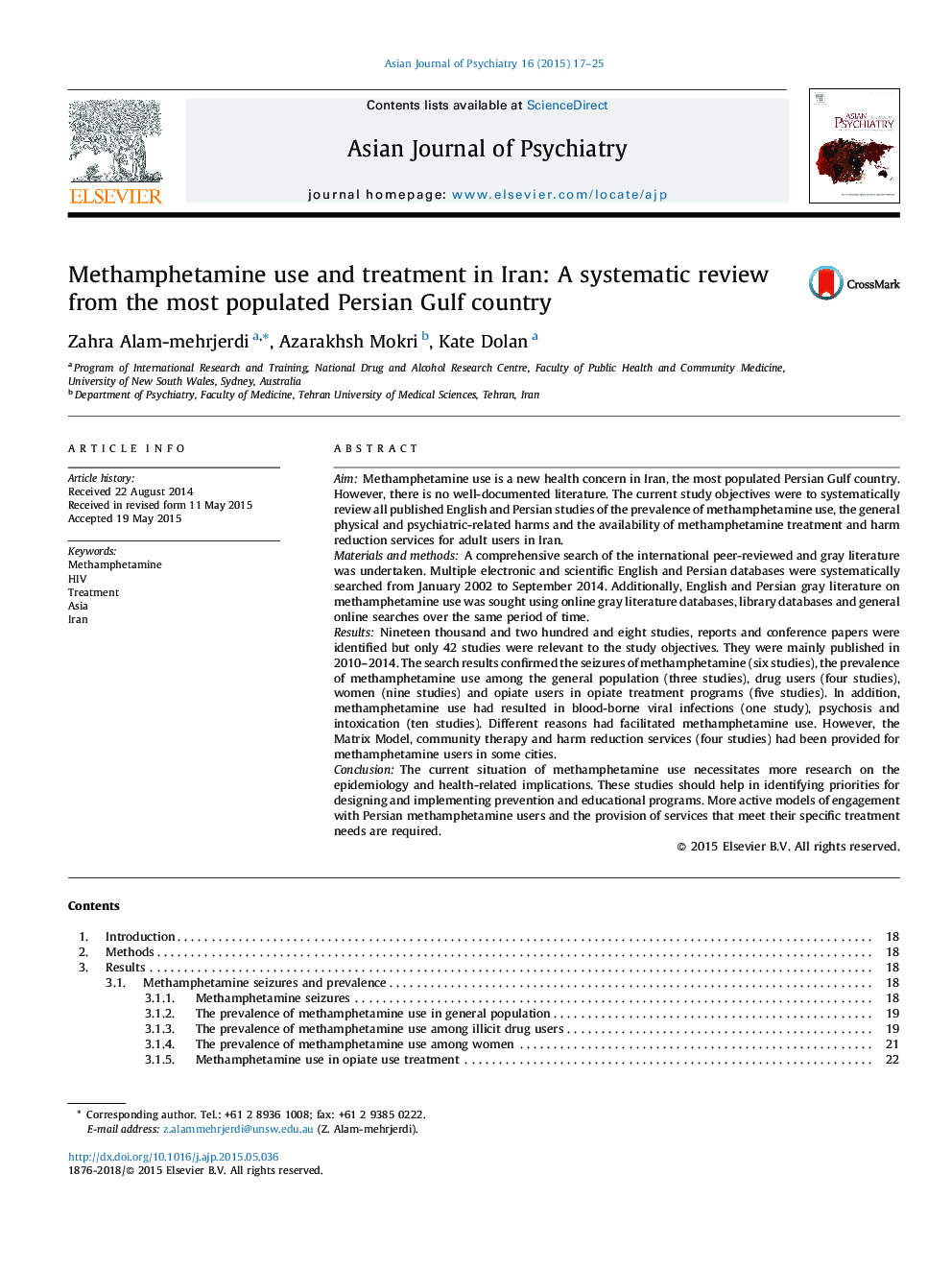| Article ID | Journal | Published Year | Pages | File Type |
|---|---|---|---|---|
| 315842 | Asian Journal of Psychiatry | 2015 | 9 Pages |
•The following study highlights:.•The new methamphetamine use problem in Iran.•The methamphetamine use treatment system in Iran.•The necessity of conducting more studies on methamphetamine use.•The necessity of implementing prevention and treatment programs for methamphetamine users.
AimMethamphetamine use is a new health concern in Iran, the most populated Persian Gulf country. However, there is no well-documented literature. The current study objectives were to systematically review all published English and Persian studies of the prevalence of methamphetamine use, the general physical and psychiatric-related harms and the availability of methamphetamine treatment and harm reduction services for adult users in Iran.Materials and methodsA comprehensive search of the international peer-reviewed and gray literature was undertaken. Multiple electronic and scientific English and Persian databases were systematically searched from January 2002 to September 2014. Additionally, English and Persian gray literature on methamphetamine use was sought using online gray literature databases, library databases and general online searches over the same period of time.ResultsNineteen thousand and two hundred and eight studies, reports and conference papers were identified but only 42 studies were relevant to the study objectives. They were mainly published in 2010–2014. The search results confirmed the seizures of methamphetamine (six studies), the prevalence of methamphetamine use among the general population (three studies), drug users (four studies), women (nine studies) and opiate users in opiate treatment programs (five studies). In addition, methamphetamine use had resulted in blood-borne viral infections (one study), psychosis and intoxication (ten studies). Different reasons had facilitated methamphetamine use. However, the Matrix Model, community therapy and harm reduction services (four studies) had been provided for methamphetamine users in some cities.ConclusionThe current situation of methamphetamine use necessitates more research on the epidemiology and health-related implications. These studies should help in identifying priorities for designing and implementing prevention and educational programs. More active models of engagement with Persian methamphetamine users and the provision of services that meet their specific treatment needs are required.
